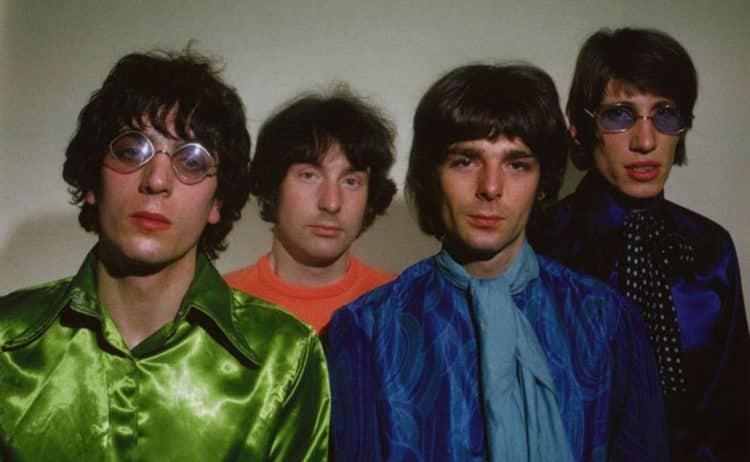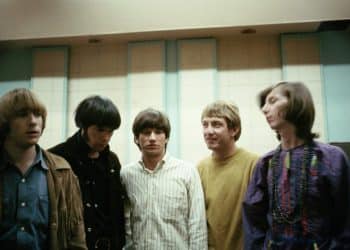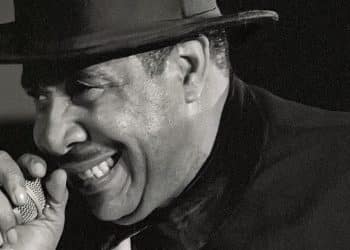Pink Floyd is more than just a band; it’s a journey through the realms of sound, emotion, and imagination. For decades, this legendary rock group has captivated audiences with their mind-bending melodies, poetic lyrics, and groundbreaking musical innovations. From the haunting echoes of space rock to the poignant anthems of rebellion and introspection, Pink Floyd has carved a timeless legacy that continues to inspire generations of fans across the globe.
In this article, we dive into the heart of Pink Floyd’s discography to explore the top 10 most popular songs of all time. These are the tracks that have defined not only the band’s career but also the very fabric of rock music itself. Whether you’re a lifelong devotee or a newcomer eager to discover their magic, these songs will transport you through a kaleidoscope of sonic beauty and raw emotion.
From the hypnotic riffs of Comfortably Numb to the philosophical musings of Time and the rebellious spirit of Another Brick in the Wall, these masterpieces showcase the genius of Pink Floyd. So, plug in your headphones, turn up the volume, and join us on this unforgettable journey into the world of one of music’s greatest bands!
1. Comfortably Numb (1979)
A true masterpiece from Pink Floyd’s landmark album The Wall, “Comfortably Numb” is often regarded as one of the most emotionally charged and sonically mesmerizing rock songs ever recorded. Released in 1979, the song is built around a conversation between a doctor and a patient, reflecting themes of emotional detachment and the struggle to feel anything at all. The contrast between Roger Waters’ almost lifeless, spoken-word verses and David Gilmour’s soaring, deeply expressive chorus creates a dynamic tension that makes the song unforgettable.
However, what truly cements “Comfortably Numb” as one of the greatest songs in rock history is its breathtaking guitar solos. Gilmour delivers not one but two legendary solos, each dripping with emotion, making it feel as if he’s speaking directly to the soul. The final solo, in particular, is a transcendent moment—soaring, fluid, and packed with raw feeling. The cinematic quality of the music transports listeners into a dreamlike state, mirroring the song’s themes of dissociation.
“Comfortably Numb” is more than just a song; it’s an experience. Its haunting lyrics, impeccable instrumentation, and legendary solos have left a permanent mark on rock music. Whether you’re discovering it for the first time or revisiting it for the hundredth, the song never loses its ability to captivate and move its audience.
2. Wish You Were Here (1975)
The title track from Pink Floyd’s 1975 album, Wish You Were Here, stands as one of the most heartfelt and introspective songs in rock history. Written as a tribute to former bandmate Syd Barrett, the song reflects the band’s deep sense of loss and longing for their friend, who had become a shadow of his former self due to mental illness.
From the moment the song begins with its distant, radio-like guitar intro, there’s a sense of nostalgia and melancholy that instantly resonates. The acoustic guitar melody, simple yet deeply evocative, pairs perfectly with the song’s reflective lyrics: “How I wish, how I wish you were here.” Roger Waters’ words capture a universal feeling of longing—not just for Barrett but for any lost connection in life.
David Gilmour’s soulful vocal delivery enhances the song’s emotional weight, while the interplay between acoustic and electric guitars creates a warm yet sorrowful atmosphere. The track is a masterclass in restraint—its power lies in its simplicity and sincerity. The song’s impact goes beyond Pink Floyd’s own story; it has become an anthem for anyone who has ever experienced the pain of absence and the yearning for something that once was.
Decades later, “Wish You Were Here” remains one of the most beloved songs in rock, a timeless reminder of the fragility of human connections and the memories that linger long after someone is gone.
3. Another Brick in the Wall, Part 2 (1979)
“Another Brick in the Wall, Part 2” is one of Pink Floyd’s most recognizable songs and their biggest commercial success. Released in 1979 as part of The Wall, the song became an anthem of rebellion with its unforgettable chorus: “We don’t need no education, we don’t need no thought control.” While on the surface it appears to be a protest against rigid schooling, it is actually part of a larger narrative within The Wall, representing the main character’s growing alienation from society.
The song’s disco-inspired beat and infectious groove were a departure from Pink Floyd’s usual progressive rock sound, making it one of their most accessible tracks. The addition of a children’s choir singing the chorus added an eerie, almost dystopian feel, reinforcing the song’s message of defiance and oppression. Producer Bob Ezrin pushed for the song’s extended groove and the use of the choir, helping transform it into a worldwide hit.
Despite its mainstream success, “Another Brick in the Wall, Part 2” remains a deeply layered song, questioning the ways in which institutions shape individuals and strip them of their individuality. It has since been embraced by various movements as a protest anthem, proving its timeless relevance.
4. Time (1973)
From the groundbreaking album The Dark Side of the Moon, “Time” is a philosophical exploration of how quickly life passes by, often without people realizing it until it’s too late. The song begins with a striking intro—an eerie cacophony of ringing clocks and alarm bells that immediately demands attention. This iconic opening was recorded by engineer Alan Parsons at an antique clock shop, setting the perfect stage for the song’s theme of fleeting time.
Lyrically, Roger Waters paints a sobering picture of wasted youth and the inevitability of aging: “No one told you when to run, you missed the starting gun.” The words serve as both a warning and a reflection on the way time seems endless in youth but rapidly slips away as one grows older.
Musically, “Time” is a masterclass in Pink Floyd’s ability to blend complexity with emotion. David Gilmour’s vocals, raw and urgent, mirror the song’s existential weight, while his bluesy, extended guitar solo injects both despair and determination into the track. Rick Wright’s haunting keyboard melodies add a dreamlike, almost surreal quality, making the song even more immersive.
As the track reaches its conclusion, it seamlessly transitions into “Breathe (Reprise),” bringing the listener full circle—perhaps symbolizing the cyclical nature of life itself. Decades after its release, “Time” remains one of the most profound and relatable songs in rock history, serving as a reminder to make the most of every moment.
5. Money (1973)
A sharp critique of materialism and greed, “Money” is one of the most instantly recognizable songs from The Dark Side of the Moon. Built around an unconventional 7/4 time signature, the song’s iconic bassline—played by Roger Waters—immediately grabs the listener’s attention. The use of cash register sounds, jingling coins, and other money-related sound effects adds a unique, immersive touch, making the song feel like a sonic representation of capitalism itself.
Lyrically, Waters takes aim at society’s obsession with wealth and status, delivering biting lines like, “Money, so they say, is the root of all evil today.” However, the song also acknowledges the seductive power of riches, making it a nuanced exploration rather than a one-sided critique.
David Gilmour’s blues-infused guitar solo, played over a shifting time signature, is another highlight of the track. As the song progresses, it explodes into a more straightforward 4/4 rock groove, intensifying the energy before settling back into its signature offbeat rhythm.
“Money” became one of Pink Floyd’s biggest hits and remains a staple of classic rock radio. While its themes of greed and excess were relevant in the 1970s, they feel just as applicable today, proving the song’s timelessness.
6. Shine On You Crazy Diamond (1975)
Few songs in rock history are as hauntingly beautiful as “Shine On You Crazy Diamond.” Released in 1975 as part of Wish You Were Here, this nine-part epic serves as a heartfelt tribute to former band member Syd Barrett, whose departure from the band due to mental illness left a lasting emotional impact on his former bandmates.
The song’s opening is a slow, atmospheric build-up featuring ethereal synthesizers and one of David Gilmour’s most delicate and expressive guitar solos. The notes seem to float in the air, gradually forming a melody that feels both mournful and transcendent. When the lyrics finally arrive—”Remember when you were young, you shone like the sun”—they carry a deep sense of longing and loss.
As the song progresses, Richard Wright’s keyboard work adds layers of depth, while the saxophone solo by Dick Parry introduces a jazz-like elegance. The track moves through various musical landscapes, at times dreamy and at times powerful, reflecting the different phases of Barrett’s life—from his brilliance as a musician to his tragic decline.
The emotional weight of “Shine On You Crazy Diamond” is undeniable. It’s not just a song; it’s a eulogy, a celebration, and a lament all rolled into one. Even decades after its release, it continues to move listeners with its poignant beauty and timeless message of remembrance.
7. Us and Them (1973)
A reflective and deeply melancholic piece from The Dark Side of the Moon, “Us and Them” is one of Pink Floyd’s most atmospheric and thought-provoking songs. Originally written by Richard Wright as an instrumental for the Zabriskie Point soundtrack, the song was later reworked with lyrics by Roger Waters, transforming it into a powerful meditation on conflict and human division.
Musically, the track is built around a slow, dreamy chord progression, with Wright’s delicate piano playing creating a hypnotic, almost trance-like effect. The use of saxophone—performed by Dick Parry—adds a layer of sorrow and nostalgia, further enhancing the song’s reflective mood.
The lyrics tackle themes of war, power, and societal inequality. Waters juxtaposes the perspectives of those in control with those who suffer under them, highlighting the stark contrasts in human experience: “Forward he cried from the rear / And the front rank died.” The song doesn’t offer answers—only an observation of the tragic cycle of human conflict.
“Us and Them” stands as one of the most emotionally resonant songs in Pink Floyd’s catalog. Its dreamlike quality invites listeners to lose themselves in its sound, while its lyrics encourage them to reflect on the divisions that continue to shape the world.
8. Hey You (1979)
From The Wall, “Hey You” is one of the most haunting and emotionally intense songs Pink Floyd ever recorded. The track serves as a desperate plea for connection, echoing the protagonist’s isolation as he becomes increasingly detached from the world around him.
Musically, the song starts with a somber acoustic guitar, setting a melancholic tone. As the song builds, Richard Wright’s synthesizers and David Gilmour’s electric guitar add layers of tension and despair. Gilmour delivers the first verse with a soft, sorrowful vocal, while Roger Waters’ more urgent delivery in the second half heightens the emotional intensity.
Lyrically, “Hey You” is filled with desperation, as the protagonist reaches out for help only to realize he is too far gone. The imagery—”But it was only fantasy / The wall was too high, as you can see”—reinforces the overarching theme of isolation that runs throughout The Wall.
The song’s blend of soft vulnerability and intense anguish makes it one of the most memorable moments in the album. For many listeners, “Hey You” serves as a reminder of the importance of human connection—and the devastating consequences of losing it.
9. Echoes (1971)
Spanning over 23 minutes, “Echoes” is an epic journey through sound and emotion, showcasing Pink Floyd’s mastery of progressive rock. Featured on their 1971 album Meddle, the song is a sprawling composition that seamlessly blends atmospheric textures, haunting melodies, and instrumental experimentation. It is often considered a precursor to the grand sonic landscapes the band would later craft on The Dark Side of the Moon.
The song opens with a single, mysterious “ping” from Richard Wright’s piano, reverberating like a sonar signal in a vast ocean. From there, it slowly builds, with David Gilmour’s ethereal guitar work and Roger Waters’ fluid bassline creating an immersive, otherworldly atmosphere. The lyrics, inspired by themes of connection and human experience, add a poetic dimension: “Strangers passing in the street / By chance two separate glances meet / And I am you and what I see is me.”
At the midpoint, the song takes a dramatic turn into a surreal, experimental section filled with eerie, whale-like guitar effects and a deep, cavernous ambiance. This section, at times unsettling, serves as a musical descent before the song returns with renewed energy, culminating in a powerful and emotional climax.
“Echoes” is more than just a song—it’s a journey through sound and emotion. Its dreamlike transitions and ambitious structure have made it a favorite among die-hard Pink Floyd fans, standing as a testament to the band’s artistic innovation and ability to create music that transcends traditional boundaries.
10. Brain Damage (1973)
As The Dark Side of the Moon approaches its grand finale, “Brain Damage” delivers a haunting and deeply introspective exploration of mental instability and societal pressures. Written by Roger Waters, the song continues the album’s overarching themes of isolation, madness, and the fragility of the human mind.
Opening with a gentle acoustic progression, “Brain Damage” immediately sets a melancholic yet inviting tone. Waters’ lyrics paint a vivid picture of psychological unraveling, using the imagery of a lunatic “on the grass” to symbolize the fine line between sanity and madness. The chorus—”And if your head explodes with dark forebodings too / I’ll see you on the dark side of the moon”—became one of Pink Floyd’s most iconic lines, encapsulating the idea that we all, in some way, experience mental strain and darkness.
The song slowly builds in intensity, with Richard Wright’s Hammond organ and David Gilmour’s harmonizing vocals adding to its hypnotic effect. As the track progresses, it seamlessly transitions into the album’s closing track, “Eclipse,” creating one of the most powerful endings in rock history.
“Brain Damage” is more than just a song about mental illness—it’s a reflection on the pressures of modern life and the struggles that come with being human. Its ability to blend poetic storytelling with unforgettable melodies has cemented its place as one of Pink Floyd’s most enduring and emotionally resonant songs.









